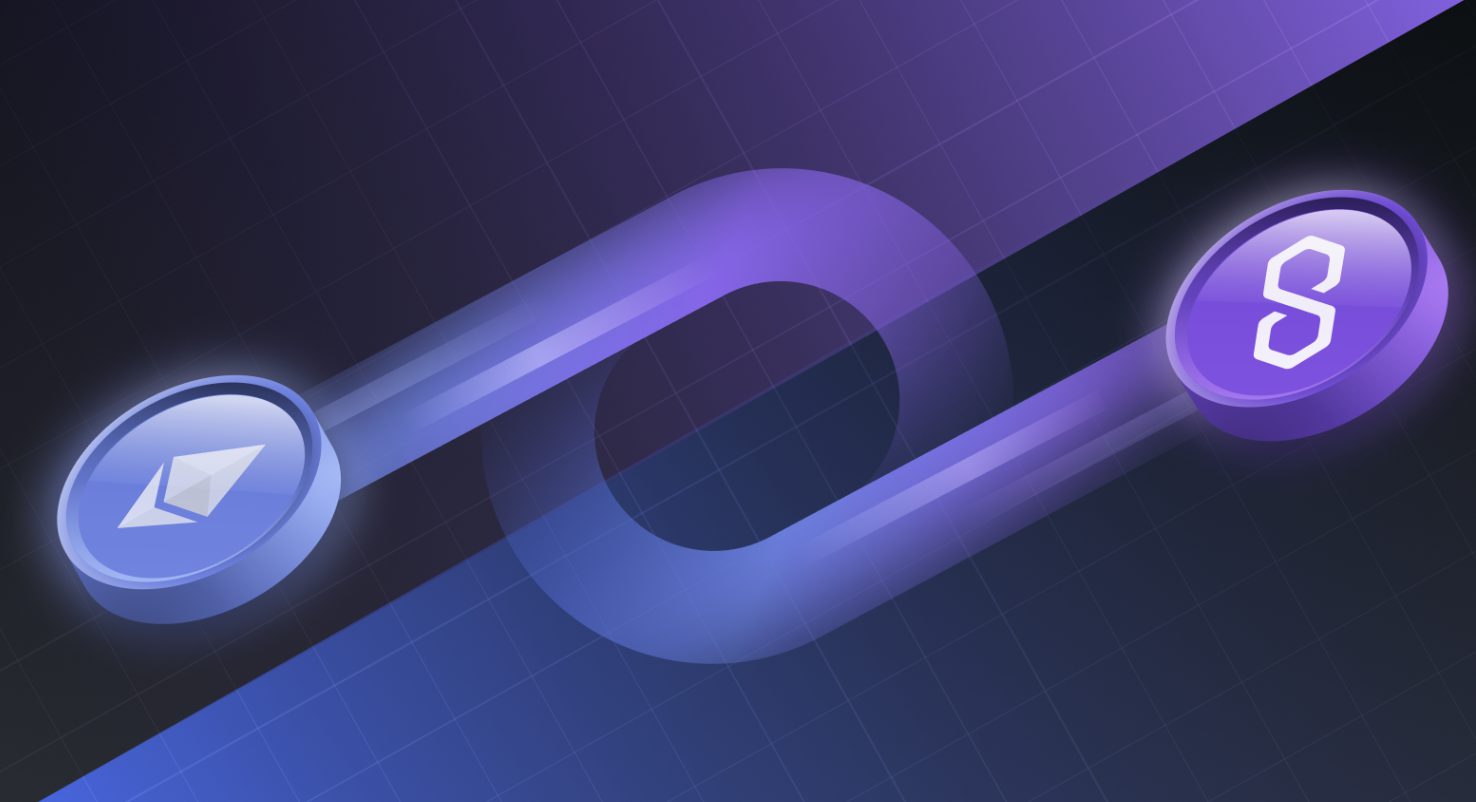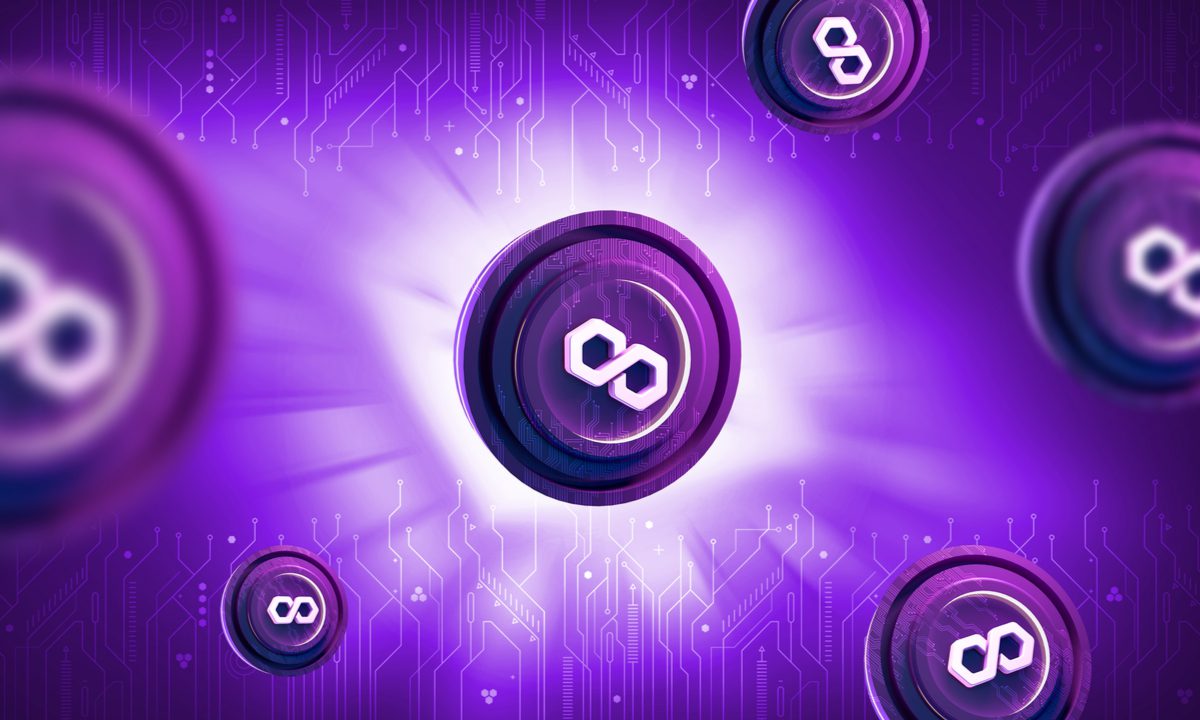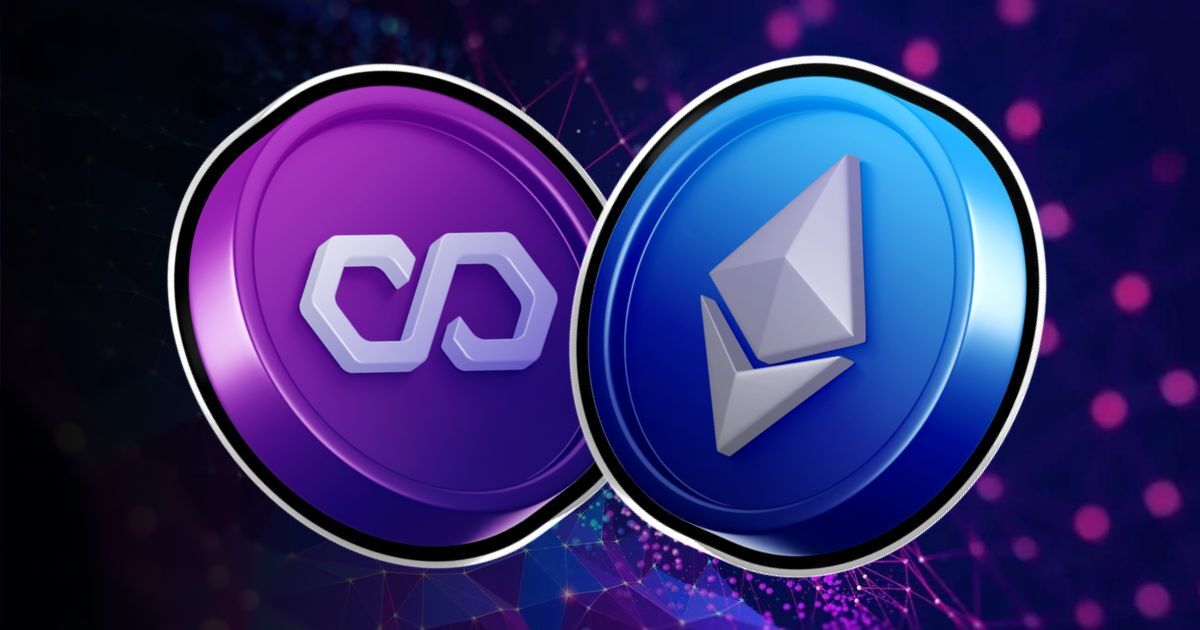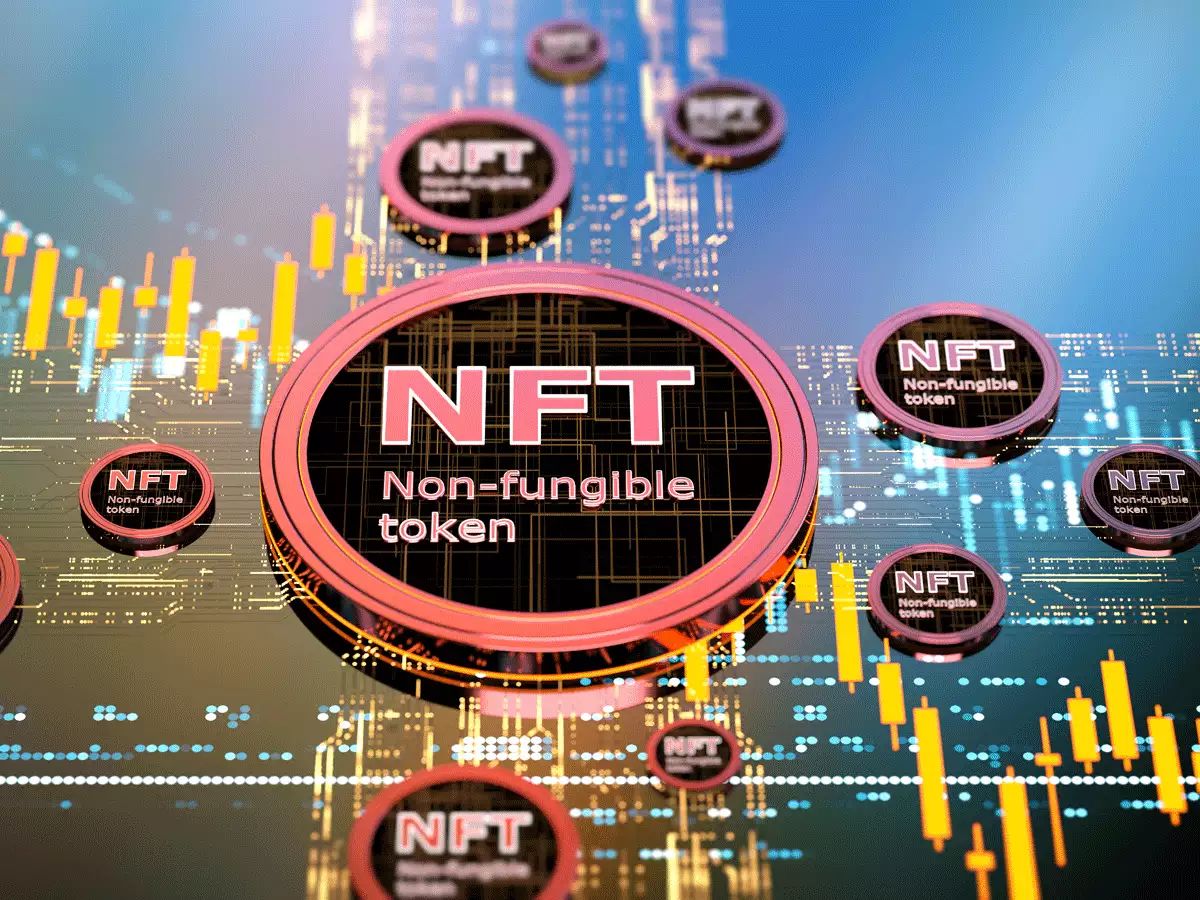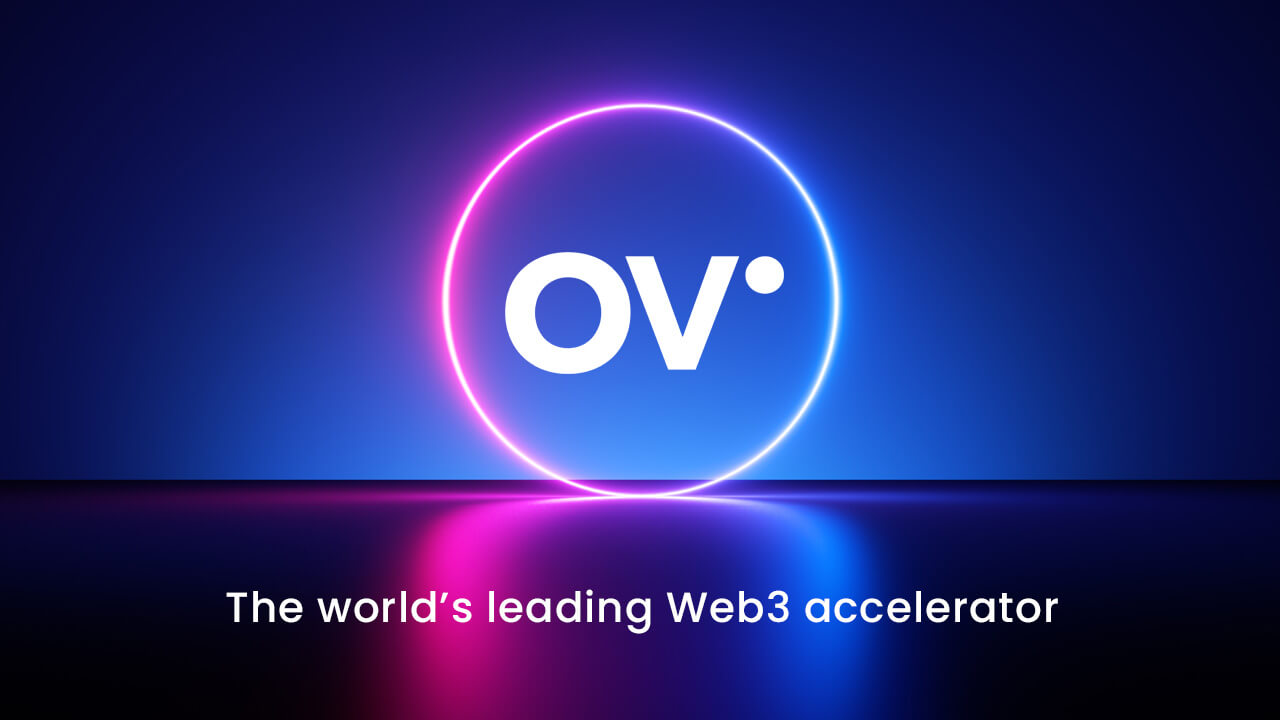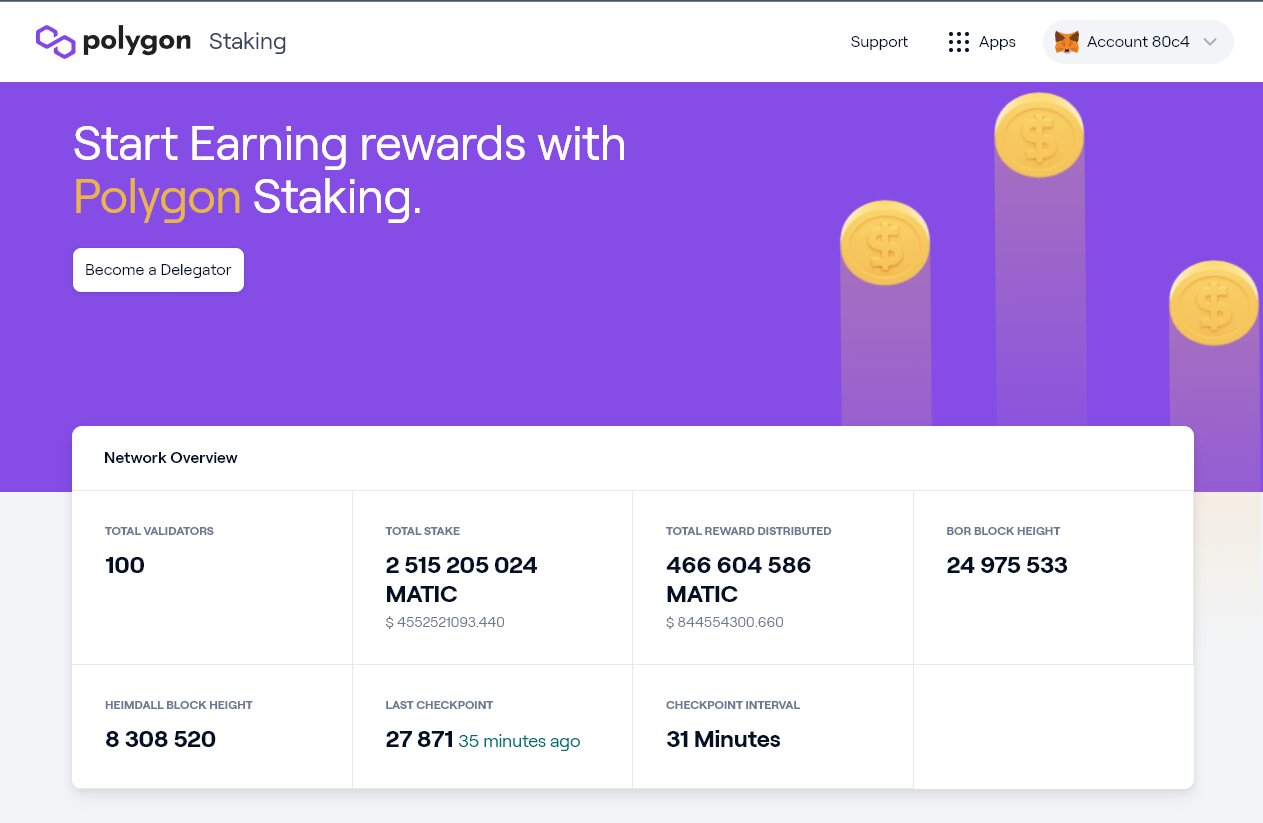Introduction
Welcome to the world of blockchain interoperability, where the possibilities of connecting different networks are becoming a reality. In this article, we will explore the process of bridging Polygon, a popular layer 2 scaling solution, to Ethereum, the leading blockchain platform. By establishing this bridge, you will be able to transfer assets and data seamlessly between Polygon and Ethereum, expanding the reach and capabilities of your applications.
But first, let’s understand the basics of Polygon and Ethereum.
Polygon, previously known as Matic Network, is a layer 2 scaling solution built on top of the Ethereum blockchain. It aims to address the scalability and high transaction fees associated with Ethereum, providing a more efficient and cost-effective alternative. Polygon achieves this by utilizing sidechains, or layers built on top of Ethereum, that can process a large number of transactions independently, reducing the burden on the main Ethereum network.
Ethereum, on the other hand, is the pioneer of smart contracts and decentralized applications (DApps). It provides a robust platform for developers to build and deploy smart contracts, enabling the creation of various decentralized applications and protocols. However, Ethereum’s scalability has been a challenge, leading to congestion and high gas fees.
So why would you want to bridge Polygon to Ethereum? The answer lies in the ability to leverage the strengths of both platforms. By bridging the two networks, you can enjoy the transaction speed and low fees of Polygon while still accessing the vast ecosystem and liquidity of Ethereum. This opens up a world of opportunities for developers, investors, and users alike, allowing them to seamlessly move assets and data between the two networks.
Now that you understand the significance of bridging Polygon to Ethereum, let’s dive into the preparations and steps required to establish this connection.
What is Polygon?
Polygon, formerly known as Matic Network, is a layer 2 scaling solution for the Ethereum blockchain. It was created to address the limitations of Ethereum in terms of scalability, transaction speed, and high fees. Instead of attempting to modify the Ethereum mainnet, Polygon operates as a sidechain, offering a more efficient and cost-effective option for developers and users.
At its core, Polygon is designed to enhance the user experience and enable a wide range of decentralized applications (DApps) and use cases. It achieves this by employing several key components:
- Polygon SDK: The Polygon SDK allows developers to build their own sidechains, known as “Polygon chains,” with customized parameters for scalability and consensus mechanisms. This flexibility enables developers to create tailored solutions to meet their specific requirements.
- Polygon PoS Chain: Polygon’s proof-of-stake (PoS) chain, known as the “Polygon PoS Chain,” acts as the main chain for sidechains. It leverages Ethereum’s security through periodic checkpoints, ensuring the integrity of transactions and the interoperability with the Ethereum ecosystem.
- Plasma Framework: Inspired by the Plasma framework, Polygon utilizes a framework known as “Plasma Chains” to achieve scalability. Plasma Chains are individual sidechains that can process a high number of transactions, thereby alleviating the congestion on the Ethereum mainnet.
- Security: Despite operating as a layer 2 solution, Polygon maintains a high level of security. Through the use of checkpoints and finality on the Ethereum mainnet, as well as the integration of various security measures on sidechains, Polygon ensures the safety and integrity of user transactions and assets.
With Polygon, developers and users can enjoy faster confirmation times, significantly reduced fees, and an enhanced user experience compared to operating solely on the Ethereum mainnet. This opens up opportunities for various use cases, including decentralized finance (DeFi) applications, non-fungible tokens (NFTs), gaming, and more.
Furthermore, Polygon offers seamless interoperability with Ethereum, allowing assets and data to be transferred seamlessly between the two networks. This integration expands the reach and accessibility of applications built on Polygon while leveraging the vast ecosystem and liquidity of Ethereum.
Now that you have a better understanding of what Polygon is and its significance in the blockchain space, let’s explore Ethereum and why bridging the two networks can be advantageous.
What is Ethereum?
Ethereum is a decentralized, open-source blockchain platform that was created to enable the development and execution of smart contracts and decentralized applications (DApps). It was introduced by Vitalik Buterin in 2015 and quickly gained popularity due to its immense potential to revolutionize various industries.
At its core, Ethereum is a globally distributed network of computers, commonly referred to as nodes, that work collectively to maintain a shared database called the Ethereum Virtual Machine (EVM). The EVM, powered by Ethereum’s native cryptocurrency Ether (ETH), allows developers to write and execute smart contracts – self-executing contracts with the terms of the agreement directly written into lines of code.
One of the key features that sets Ethereum apart is its ability to support complex, Turing-complete programming logic. This means that developers can write sophisticated applications that can execute arbitrary computations, opening up a world of possibilities for creating decentralized applications with a wide range of functionalities.
Ethereum operates on a consensus mechanism called Proof of Work (PoW), similar to Bitcoin. However, it is in the process of transitioning towards a more energy-efficient and scalable consensus mechanism called Proof of Stake (PoS). This transition, known as Ethereum 2.0, aims to significantly improve the scalability, security, and sustainability of the Ethereum network.
With Ethereum, developers have the flexibility to build various decentralized applications, including decentralized finance (DeFi) protocols, decentralized exchanges, supply chain management systems, identity verification solutions, and much more. These applications can operate without the need for intermediaries, offering transparency, security, and efficiency.
In addition to its robust platform for building DApps, Ethereum has a vast and active community of developers, users, and contributors. This ecosystem fosters innovation, collaboration, and continuous improvement, making Ethereum a hub for technological advancements in the blockchain industry.
Furthermore, Ethereum has become the foundation for digital assets known as ERC-20 tokens, which have gained significant popularity in the world of cryptocurrencies. These tokens adhere to a standard set of rules on the Ethereum blockchain, enabling seamless interoperability and facilitating the creation of decentralized exchanges and tokenized assets.
By bridging Polygon to Ethereum, users can tap into this vast network, leverage the scalability of Polygon, and enjoy the benefits of Ethereum’s expansive ecosystem. This integration paves the way for improved functionality, increased liquidity, and enhanced possibilities for developers, users, and investors alike.
Why bridge Polygon to Ethereum?
The decision to bridge Polygon to Ethereum offers numerous advantages and opportunities for both developers and users. Let’s explore the key reasons why bridging these two networks is beneficial:
Scalability: Ethereum has long been plagued by scalability issues, resulting in network congestion and high transaction fees during periods of high demand. Polygon, with its layer 2 scaling solution, provides a way to offload transactions from the Ethereum mainnet, significantly increasing scalability. By bridging Polygon to Ethereum, users can experience faster confirmation times and lower fees while still benefiting from Ethereum’s extensive ecosystem.
Cost-Effectiveness: High transaction fees on the Ethereum network have become a major concern for users. By utilizing Polygon’s sidechains, which offer faster and cheaper transactions, users can mitigate the cost burden associated with Ethereum. Bridging Polygon to Ethereum allows for seamless access to the benefits of both networks, enabling users to perform transactions at a fraction of the cost.
Interoperability: Bridging Polygon to Ethereum enhances the interoperability between the two networks. It enables users to transfer assets and data seamlessly between Polygon and Ethereum, expanding the possibilities for developers and users alike. This interoperability unleashes the potential for cross-chain decentralized applications, token bridges, and liquidity pools, fostering innovation and collaboration within the blockchain ecosystem.
Access to Ethereum’s ecosystem: Ethereum boasts one of the largest and most vibrant blockchain ecosystems. It is home to a vast array of decentralized applications, exchanges, and investment opportunities. By bridging Polygon to Ethereum, users gain access to this extensive ecosystem, allowing them to leverage the liquidity and user base of Ethereum. This integration facilitates the adoption and growth of projects built on Polygon, providing a platform for developers to reach a wider audience.
Diverse Use Cases: The integration of Polygon and Ethereum opens up a plethora of use cases for developers. From decentralized finance (DeFi) applications to non-fungible tokens (NFTs), gaming, supply chain management, and more, developers can harness the strengths of both platforms to create innovative and impactful solutions. With the ability to bridge assets and data between Polygon and Ethereum, the possibilities for creating new and exciting dApps are virtually limitless.
The decision to bridge Polygon to Ethereum is driven by the desire to combine the scalability, cost-effectiveness, interoperability, and vast ecosystem of Ethereum with the efficiency and developer-friendly environment of Polygon. This integration offers a win-win situation for users and developers, unlocking new opportunities and pushing the boundaries of what is possible in the blockchain space.
Preparations before Bridging
Before embarking on the process of bridging Polygon to Ethereum, there are a few essential preparations that need to be made. These preparations ensure a smooth and successful bridging experience. Let’s explore the key steps you should take:
1. Understanding the networks: Familiarize yourself with the structure and functionalities of both Polygon and Ethereum. Understand the concepts of sidechains, Ethereum mainnet, gas fees, and smart contracts. This knowledge will help you make informed decisions throughout the bridging process.
2. Wallet setup: Ensure that you have the necessary wallets set up for both Polygon and Ethereum. Popular wallet options include MetaMask and MyEtherWallet, which support both networks. Make sure to secure your wallets with strong passwords and backup your private keys or seed phrases.
3. Asset selection: Determine which assets you want to bridge from Polygon to Ethereum. Ensure that these assets are supported on both networks and meet any specific requirements set by the bridging solution you choose.
4. Understanding bridge fees: Familiarize yourself with the fees associated with the bridging process. Different bridge solutions may have varying fee structures, including transaction fees and gas fees. Consider these fees when deciding on the assets and quantities you want to bridge.
5. Ensuring network compatibility: Ensure that you are using a compatible version of your wallet and that it is connected to the correct network. For Polygon, you will typically need to connect to the Polygon network or one of its sidechains, such as the Mumbai Testnet. For Ethereum, connect to the Ethereum mainnet or the appropriate testnet.
6. Researching bridge solutions: Research and choose a bridge solution that meets your requirements and aligns with your technical capabilities. There are various bridge solutions available, such as the official Polygon Bridge or other third-party bridges like Hop Protocol or Connext. Understand the steps involved in the bridging process and any limitations or considerations associated with each solution.
7. Testing with small amounts: Before bridging a significant amount of assets, it is advisable to test the process with small amounts first. This allows you to familiarize yourself with the bridge solution and ensure that everything works as expected. Testing with small amounts reduces the risk of potential losses or complications during the actual bridging process.
8. Keeping backups and records: Prior to initiating the bridging process, make sure to keep backups and records of all necessary information, such as wallet addresses, transaction hashes, and bridge confirmations. These records serve as references in case any issues or disputes arise during or after the bridging process.
Taking these preparations before bridging ensures that you have a clear understanding of the process, that your assets and wallets are ready, and that you are equipped with the necessary knowledge to navigate the bridging process smoothly. With these preparations in place, you can proceed confidently to choose a bridge solution and initiate the bridging process.
Choosing a Bridge
When it comes to bridging Polygon to Ethereum, there are several bridge solutions available. These bridge solutions facilitate the transfer of assets and data between the two networks. It is essential to carefully evaluate and choose the right bridge for your specific requirements. Here are some factors to consider when selecting a bridge:
1. Ease of use: Look for a bridge solution that is user-friendly and intuitive. The bridge interface should be clear and easy to navigate, making the bridging process accessible to users of varying technical expertise.
2. Security: Security should always be a top priority when selecting a bridge solution. Ensure that the bridge has implemented adequate security measures, such as secure key management and encryption protocols, to protect user assets during the bridging process.
3. Supported assets: Check which assets are supported by the bridge solution. Ensure that the assets you want to bridge from Polygon to Ethereum are supported. Additionally, consider the flexibility of the bridge solution in supporting future assets or tokens that you may want to bridge.
4. Bridge fees: Consider the fees associated with the bridge solution. Different bridges may have different fee structures, such as fixed fees or percentage-based fees. Assess the impact of these fees on the assets you intend to bridge. It is important to strike a balance between the cost of bridging and the value of the assets being transferred.
5. Liquidity: Evaluate the liquidity of assets on the bridge solution. Higher liquidity ensures that you can easily convert assets on either network once they are bridged. Consider the availability of dedicated liquidity pools or decentralized exchanges supporting the bridged assets.
6. Reputation and community support: Assess the reputation of the bridge solution and the level of community support it receives. Look for reviews, testimonials, or feedback from other users who have already utilized the bridge. Consider joining community forums or social media groups to gather insights and recommendations from experienced users.
7. Reliability and stability: Choose a bridge that has a track record of reliability and stability. The bridge solution should have a good uptime history and undergo regular audits or security assessments to mitigate the risk of vulnerabilities or exploits.
8. Future development: Consider the future development plans of the bridge solution. Look for bridges that have an active development team and are committed to improving the functionality and features of the bridge. Future updates and enhancements can enhance the overall user experience and security of the bridge.
By carefully evaluating these factors, you can choose a bridge solution that aligns with your priorities and requirements. It is advisable to conduct thorough research, read documentation, and seek the guidance of the community before making a final decision. Once you have chosen a bridge solution, you can proceed with setting up the bridge and initiating the bridging process.
Setting up the Bridge
Once you have chosen a bridge solution to bridge Polygon to Ethereum, the next step is to set up the bridge. This involves configuring the necessary settings and establishing the connection between the two networks. Here are the general steps to set up the bridge:
1. Selecting the bridge: Follow the documentation or instructions provided by your chosen bridge solution to set up the bridge. Ensure that you have chosen the appropriate bridge for bridging Polygon to Ethereum.
2. Obtaining bridge addresses: Each bridge solution will have specific addresses associated with it. Obtain the addresses required for the bridging process, including the deposit address on Polygon and the receiving address on Ethereum. These addresses are used to facilitate the transfer of assets between the two networks.
3. Configuring the wallet: Configure your wallet to connect to both Polygon and Ethereum networks. This allows the wallet to interact with the bridge and initiate and confirm transactions during the bridging process. Ensure that your wallet is properly connected, and you have selected the correct network for each respective blockchain.
4. Setting up approvals: Depending on the bridge solution, you may need to give approvals or permissions for the bridge to access and transfer your assets. These approvals are often required to ensure the security and integrity of the bridging process. Follow the instructions provided by the bridge solution to grant the necessary approvals.
5. Verifying asset compatibility: Double-check the compatibility of the assets you want to bridge. Ensure that they meet the requirements and specifications set by the bridge solution. Some bridges may have limitations on the types of assets or specific token standards they support.
6. Testing the bridge: Before initiating the actual bridging process, consider conducting a test transaction with a small amount of assets. This allows you to verify that the bridge is functioning correctly and that your wallet and settings are configured properly. Testing helps mitigate any potential issues before committing larger asset transfers.
7. Transaction fees and gas: Be aware of the transaction fees and gas requirements associated with the bridge. Different bridge solutions may have varying fee structures and gas requirements. Ensure that you have sufficient funds in your wallet to cover these fees during the bridging process.
8. Understanding confirmation times: Take note of the estimated confirmation times for the bridge transactions. Transfer times may vary depending on the congestion of the networks and the specific bridge solution being used. Being aware of these confirmation times helps manage expectations and avoid unnecessary concerns during the bridging process.
By following these steps and ensuring that your wallet and settings are properly configured, you can successfully set up the bridge between Polygon and Ethereum. Once the bridge is set up, you are ready to initiate the bridging process and transfer your assets between the networks. Make sure to monitor the progress of the bridge transactions and confirm the successful completion before proceeding with further actions.
Initiating the Bridge Process
After setting up the bridge between Polygon and Ethereum, the next step is to initiate the bridging process. This involves following specific steps to transfer your assets from Polygon to Ethereum. Here is a general guide on how to initiate the bridge process:
1. Connect to your wallet: Ensure that your wallet is connected to the appropriate network. If you are bridging from Polygon to Ethereum, your wallet should be connected to the Polygon network. This enables your wallet to interact with the bridge and initiate the bridging process.
2. Access the bridge interface: Open the bridge interface provided by your chosen bridge solution. This interface allows you to access the specific tools and functions needed to initiate the bridge process. Proceed to the relevant section for bridging from Polygon to Ethereum.
3. Select the assets: Choose the assets you want to bridge from Polygon to Ethereum. Ensure that these assets are compatible with the bridge solution and meet any specific requirements or limitations. Some bridges may have restrictions on certain asset types or specific token standards.
4. Enter the withdrawal address: Provide the Ethereum address where you want to receive the bridged assets. Ensure that you enter the correct address, as any mistake may result in the loss of your assets. Double-check the address before proceeding to the next step.
5. Specify the transfer amount: Enter the desired amount of assets you want to bridge from Polygon to Ethereum. Ensure that the amount does not exceed your available balance on Polygon and that you have the necessary funds to cover any associated transaction fees.
6. Confirm the transaction: Review all the details of the bridging process, including the assets, addresses, and transfer amount. Once you are satisfied with the information, confirm and authorize the transaction. Some bridges might require additional authentication, such as signature verification or multi-factor authentication.
7. Monitor the transaction progress: After initiating the bridging process, monitor the progress of the transaction. Depending on the bridge solution and network congestion, it may take some time for the transaction to be confirmed and completed. Keep an eye on the transaction status and any notifications from the bridge solution or your wallet.
8. Verify the completion: Once the bridging process is complete, verify the successful transfer of your assets on the Ethereum network. Use the Ethereum address you provided to check the balance and confirm that the bridged assets are now available. Additionally, compare the transaction details in your wallet or the bridge interface to ensure consistency.
Initiating the bridge process requires attention to detail and ensuring the accuracy of the provided information. By following the provided steps and carefully monitoring the progress, you can safely initiate the bridge and transfer your assets from Polygon to Ethereum. Once the transfer is verified, you can proceed with further actions, such as interacting with decentralized applications or trading the bridged assets.
Monitoring the Bridge Progress
Once you have initiated the bridging process from Polygon to Ethereum, it is important to monitor the progress of the bridge transaction. Monitoring allows you to track the status of the transfer and ensure its successful completion. Here are the key steps to effectively monitor the bridge progress:
1. Transaction confirmation: Keep an eye on your wallet or the bridge interface for transaction confirmations. In most cases, you will receive a transaction hash or ID that confirms the initiation of the bridge transaction. This hash serves as a unique identifier that can be used to track the progress of the transfer.
2. Network explorers: Utilize blockchain network explorers, such as Etherscan for Ethereum or PolygonScan for Polygon, to monitor the status of the bridge transaction. These explorers provide real-time information about the transaction, including its status, block confirmations, and other relevant details.
3. Confirmations and block confirmations: Monitor the number of confirmations the transaction receives within the blockchain. Each confirmation indicates that the transfer has been included in a block and is becoming more secure over time. The required number of confirmations may vary depending on the bridge solution and network conditions.
4. Transaction time estimation: Understand the average transaction time for the specific bridge solution being used. This estimation may vary due to network congestion or other factors. Keeping track of transaction times allows you to gauge whether the transfer is progressing as expected or if there are any delays.
5. Bridge updates or notifications: Stay informed about any updates or notifications provided by the bridge solution. Some bridges may offer email alerts, push notifications, or status updates on their website or social media channels. These updates can inform you about any maintenance, delays, or issues affecting the bridge progress.
6. Contacting support: If there are any concerns or issues with the bridge progress, reach out to the support team of the bridge solution. They can provide assistance, troubleshoot problems, and offer guidance. Ensure that you have any necessary information, such as the transaction hash or any error messages, ready when contacting support.
7. Patience and vigilance: It is important to exercise patience and maintain vigilance while monitoring the bridge progress. The transfer may take some time to be confirmed and completed, especially during periods of high network congestion. Reliable bridge solutions will provide updates and ensure that the transfer is successfully executed.
By consistently monitoring the bridge progress, you can stay informed about the status of the transfer and anticipate its completion. This level of monitoring enables you to promptly address any issues and ensures a smooth and successful bridging process. Once the bridge transaction is confirmed and the transfer is finalized, you can proceed with confirming the presence of your assets on the receiving network.
Confirming the Transfer
After the bridge process from Polygon to Ethereum has been initiated and the transfer has been completed, it is crucial to confirm the successful transfer of your assets on the receiving network. Confirming the transfer ensures that your assets have been successfully bridged and are now available for use on the Ethereum network. Here are the steps to confirm the transfer:
1. Check the receiving address: Verify that the Ethereum address to which you initiated the bridge has received the assets. Use a blockchain explorer like Etherscan to search for the receiving address and confirm the presence of the bridged assets. Review the transaction details and ensure that the correct amount of assets has been transferred.
2. Validate the transaction: Validate the bridging transaction within the blockchain explorer. Match the transaction details, such as the transaction hash, with the data provided by the bridge solution or your wallet. Validating the transaction provides an additional layer of confirmation and ensures the integrity of the transfer.
3. Monitor the asset balance: Keep an eye on your wallet on the Ethereum network and observe any changes in your asset balance. Confirm that the bridged assets are reflected accurately and that their quantity corresponds to the initial amount transferred. Monitor the balance periodically to ensure that it remains consistent.
4. Test functionality: Execute test transactions or interactions with your bridged assets to confirm their functionality on the Ethereum network. For example, if you bridged ERC-20 tokens, attempt to make a transfer to another Ethereum address or interact with decentralized applications that utilize these tokens. Testing the functionality provides assurance that the bridged assets can be used as intended.
5. Verify liquidity options: Explore the availability of liquidity options for your bridged assets on the Ethereum network. Check decentralized exchanges and liquidity pools that support the specific assets you bridged. Confirm that you can freely trade or exchange your assets for other tokens or assets within the Ethereum ecosystem.
6. Cross-reference information: Cross-reference the transaction and bridge details with the records or confirmations provided by the bridge solution. Ensure that all the information aligns, including the transaction hash, bridge fees, and any other relevant data. Doing so helps maintain an accurate record of your bridging process.
7. Keep backups: Preserve backups of all essential information, including transaction details, addresses, and any confirmations or receipts received during the bridge process. These backups serve as evidence and references in case any discrepancies or disputes arise in the future.
If you encounter any issues or discrepancies during the confirmation process, refer to the support provided by the bridge solution or community forums to seek assistance. They can guide you through any troubleshooting steps and help resolve any concerns you may have.
By carefully confirming the transfer of your assets from Polygon to Ethereum, you can ensure that the bridging process was successful and that your assets are now available on the Ethereum network. This confirmation empowers you to confidently proceed with utilizing your bridged assets within the Ethereum ecosystem.
Finalizing the Bridge Process
Once you have confirmed the successful transfer of your assets from Polygon to Ethereum, it is important to finalize the bridge process. Finalizing the bridge process involves completing necessary tasks to ensure the security and integrity of the transferred assets. Here are the key steps to finalize the bridge process:
1. Update records and documentation: Update your records and documentation to reflect the completion of the bridge process. Maintain a record of the bridged assets, the transaction details, and any relevant information associated with the bridge. This record provides a comprehensive overview of the bridge process for future reference.
2. Secure your assets: Ensure that you have taken necessary security measures to protect your bridged assets on the Ethereum network. This includes using secure wallets, safeguarding your private keys, enabling two-factor authentication, and following best practices for asset storage and protection. Your assets should be treated with the same level of security as any other cryptocurrencies in your possession.
3. Evaluate asset functionality: Assess the functionality and usability of your bridged assets on the Ethereum network. Test different operations, such as transfers, interactions with decentralized applications, or participation in liquidity pools. Explore the capabilities and features available to you and how you can make the most of your bridged assets within the Ethereum ecosystem.
4. Monitor updates and improvements: Stay informed about any updates or improvements related to the bridge solution you used. Updates may include enhanced features, bug fixes, or optimizations that could improve the overall bridge experience. Keeping track of these updates allows you to stay up to date with the latest advancements in bridging technology.
5. Engage with the community: Participate in community forums or social media channels to connect with other users who have bridged assets between Polygon and Ethereum. Engaging with the community provides an opportunity to share experiences, gather insights, and learn about any tips or tricks that can enhance your bridge experience.
6. Seek professional advice: If you are managing substantial amounts of bridged assets or have complex requirements, consider seeking professional advice from legal and financial experts. They can provide guidance on compliance, tax implications, and asset management strategies specific to your situation.
7. Stay updated on network developments: Stay informed about the developments in both the Polygon and Ethereum networks. This includes upgrades, protocol changes, governance decisions, and regulatory developments. Being aware of these developments ensures that you can adapt and make informed decisions regarding your bridged assets as the networks evolve.
Finalizing the bridge process ensures that you have completed all necessary tasks to secure and utilize your bridged assets on the Ethereum network. By finalizing the bridge process, you can confidently navigate the Ethereum ecosystem and leverage the benefits of bridging between Polygon and Ethereum.
Considerations after Bridging
After completing the bridge process from Polygon to Ethereum, there are several important considerations to keep in mind. These considerations will help you optimize your experience and make the most of your bridged assets within the Ethereum ecosystem. Here are some key points to consider:
1. Transaction fees and gas costs: Be mindful of the transaction fees and gas costs associated with interacting with your bridged assets on the Ethereum network. Ethereum’s gas fees can fluctuate, especially during times of high network congestion. It is essential to assess the cost implications and factor them into your decision-making process.
2. Security measures: Maintain robust security measures to protect your bridged assets on the Ethereum network. Ensure that you use secure wallets, enable two-factor authentication, and keep your private keys safe. Regularly update your software and follow best practices for securing your digital assets.
3. Diverse use cases: Explore the wide range of use cases available for your bridged assets within the Ethereum ecosystem. Ethereum offers a multitude of decentralized applications (DApps), decentralized finance (DeFi) protocols, and other innovative platforms. Be open to exploring new opportunities and consider diversifying your assets to maximize potential returns.
4. Maintaining asset liquidity: Continuously assess the liquidity options available for your bridged assets on Ethereum. Stay informed about decentralized exchanges and liquidity pools where you can trade or provide liquidity for your assets. Monitoring and optimizing liquidity ensures that you can easily convert your assets when needed.
5. Network upgrades and protocols: Stay updated on network upgrades, protocol improvements, and changes within the Ethereum ecosystem. Ethereum is constantly evolving, and being aware of these upgrades enables you to adapt and take advantage of new features and functionalities available to your bridged assets.
6. Platform compatibility: Ensure that your bridged assets are compatible with the decentralized platforms and applications you want to utilize. Different platforms may have specific requirements or may only support specific asset types or token standards. Confirm the compatibility of your assets with the platforms you intend to engage with.
7. Community engagement: Engage with the Ethereum community to stay connected with the latest trends, insights, and developments. Participate in forums, social media groups, and events to learn from experienced users and industry experts. Being part of the community fosters collaboration, builds networks, and provides access to valuable resources and knowledge.
8. Regular asset evaluation: Regularly evaluate the performance and value of your bridged assets within the Ethereum ecosystem. Assess market conditions, monitor asset prices, and stay informed about any developments that may impact the value or utility of your assets. This evaluation allows you to make informed decisions regarding your portfolio management.
By considering these factors, you can navigate the Ethereum ecosystem effectively and enhance the value and utility of your bridged assets. Adaptability, security, and staying informed will enable you to make the most of the opportunities and innovations available within the Ethereum network.
Conclusion
Bridging Polygon to Ethereum offers a gateway to enhanced scalability, improved functionality, and expanded possibilities within the blockchain ecosystem. By leveraging the strengths of both networks, developers and users can benefit from faster transaction speeds, cost-effectiveness, and access to a diverse range of decentralized applications and liquidity pools.
Polygon, with its layer 2 scaling solution, addresses the scalability and cost issues associated with Ethereum, providing a more efficient and cost-effective alternative. By bridging Polygon to Ethereum, users can tap into the extensive ecosystem and liquidity of Ethereum while enjoying the benefits of Polygon’s sidechains and faster confirmation times.
Throughout the bridging process, careful considerations and preparations are essential. Understanding the networks, choosing the right bridge solution, and ensuring wallet compatibility establish a solid foundation for a successful bridge experience. Monitoring the bridge progress, confirming the transfer, and finalizing the bridge process validate the secure transfer of assets from Polygon to Ethereum.
After bridging, it is crucial to stay updated on network developments, maintain security measures, and explore the various use cases and liquidity options available within the Ethereum ecosystem. Regular evaluation of asset performance and engagement with the Ethereum community further optimize the utilization and growth of bridged assets within the network.
Bridging Polygon to Ethereum opens up a world of opportunities, bridging the gap between scalability and functionality. It enables developers to build innovative decentralized applications, empowers users with faster and more cost-effective transactions, and contributes to the overall growth and advancement of the blockchain industry.
By embracing the potential of bridging Polygon to Ethereum, individuals and organizations can take full advantage of the strengths of these networks and unlock new possibilities that drive blockchain technology forward.







